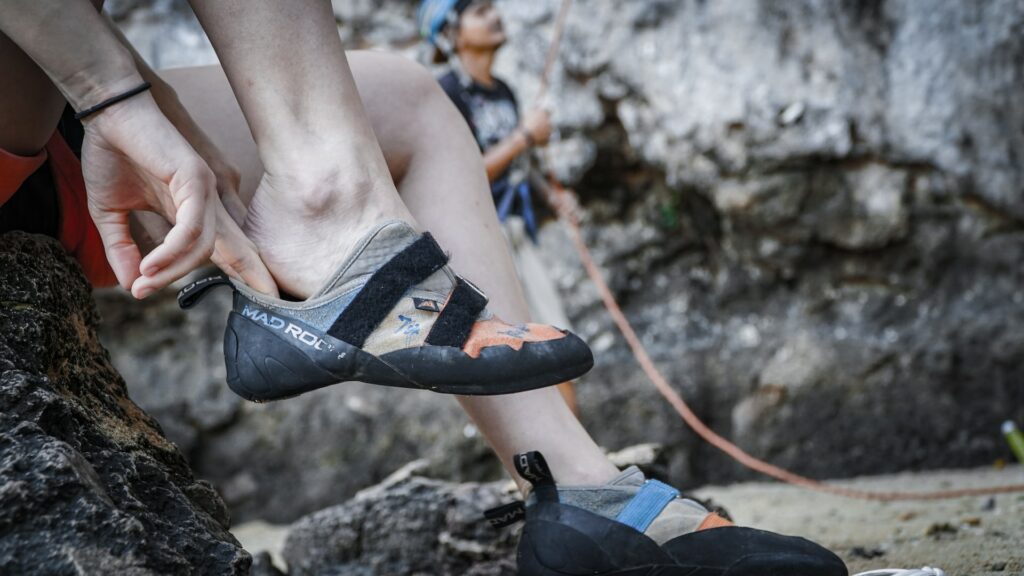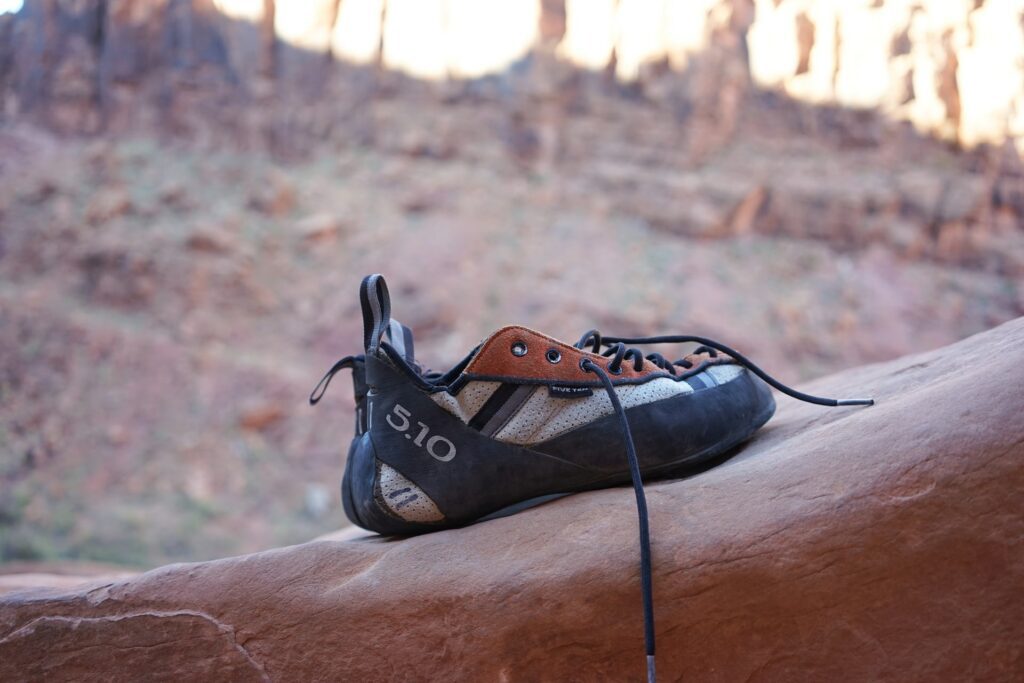Table of Contents
Climbing shoes are essential equipment for rock climbing enthusiasts. They have a unique design that enables climbers to get a better grip on surfaces, making it easier to climb and navigate through challenging routes.
One of the most important aspects when choosing climbing shoes is ensuring a proper fit. Properly fitting climbing shoes can make all the difference between success and failure while out on climbs. In this article, we’ll take an in-depth look at everything you need to know about fitting your climbing shoes correctly.

Why Is Proper Fitting Important?
Having properly fitted climbing shoes can make all the difference in maintaining balance and control during difficult maneuvers, thus increasing overall enjoyment while reducing the risks associated with ill-fitting alternatives such as foot cramping or slipping off footholds. Additionally, having snugly fitted toes within the shoe’s front section (toe box) increases sensitivity, allowing for greater awareness of tactile feedback from the surface beneath, improving precision placement movements, and enhancing performance potential.
Key Factors To Consider For Proper Fitting
- Comfort – The first thing to consider when trying on climbing shoes is comfort. You want them to be snug but not too tight that they cause discomfort or pain after wearing them for an extended period. Keep in mind that different brands offer variations regarding sizing, and even models within the same brand can differ. Climbing shoes are not always the most comfortable, but a broken-in pair of climbing shoes shouldn’t hurt your feet.
- Sizing – While purchasing online can save time and money, be careful, especially if you are new to a particular brand/model. Before committing, ensure you have the option to try on the shoes to see which sizes work best based on your personal dimensions and preferences. Also, always cross-check the size chart options available on each product page before placing an order!
- Material – The climbing shoe’s outer material type choice determines the break-in duration required. Leather-based materials tend to require longer, whereas synthetic counterparts usually don’t take much breaking-in time. However, depending upon individual preference, both types have their pros and cons, so choose wisely accordingly.
- Toe Box – The area where the toes go inside should provide enough space and room to barely wiggle yet still remain secure without any slippage or movement occurring during activity. Do note that certain specialized models may favor narrower toe boxes, catering more towards precise edging capabilities over general use cases. Tip: keep your toenails trimmed!
- Heel Cup – Another critical aspect concerns the heel cup region, ensuring it fits securely without excess bagginess common around the Achilles tendon area, ideally preventing unwanted sliding down the back of the heel, leading to the loss of valuable force transmission, resulting in compromised stability and footing. Also, if intended usage involves repeated heel hooking techniques, specific construction features like rubberized edge reinforcements help prevent premature wear and tear damage to heels over time.
- Foot Hygiene – In addition to the factors mentioned above, foot hygiene is also an essential consideration when fitting your climbing shoes. It is recommended to keep your feet clean and dry, as moisture can cause discomfort and even lead to infections. Additionally, make sure to clip your toenails regularly to prevent them from digging into the front of the shoe and causing discomfort or even injury. By taking care of your feet, you can ensure a comfortable and safe climbing experience.
Final Thoughts
Properly fitting your climbing footwear cannot be overstated. Correct sizing means improved performance, and safety, and ultimately leads to an increased fun quotient! Take into consideration the aforementioned factors before investing money/time/effort in finding the ideal pair of climbing shoes for your needs and preferences, whether intense bouldering sessions atop rocky cliffs or long multi-pitch traverses across mountainous terrain – the perfect fit will undoubtedly result in optimal results in achieving personal goals set forth by yourself!



